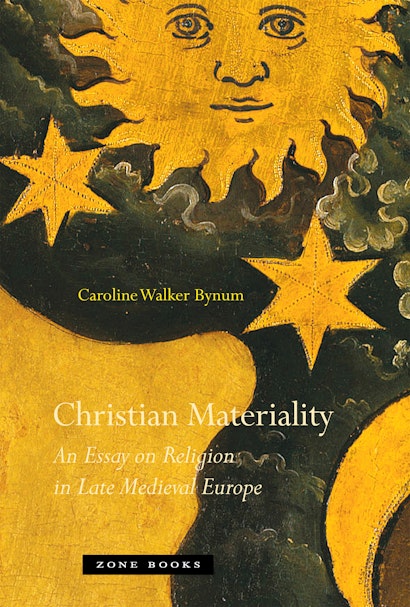Christian Materiality: An Essay on Religion in Late Medieval Europe


Paperback
- Price:
- $33.00/£28.00
- ISBN:
- Published:
- Feb 10, 2015
- Copyright:
- 2011
- Pages:
- 416
- Size:
- 6 x 9 in.
- 50 b/w illus.
- Main_subject:
- History
In the period between 1150 and 1550, an increasing number of Christians in western Europe made pilgrimage to places where material objects — among them paintings, statues, relics, pieces of wood, earth, stones, and Eucharistic wafers — allegedly erupted into life. These objects appeared animated — they wept, bled, and even walked. Such phenomena posed a challenge to Christians. On the one hand, they sought ever more frequent encounters with miraculous matter and, on the other hand, they turned toward an inward piety that rejected material objects of devotion. By the fifteenth century, these aspirations, accompanied by new anxieties and concerns, were at the heart of religious practice and polemic.
In Christian Materiality, Caroline Walker Bynum describes the miracles themselves, discusses the problems they posed to both church authorities and to the ordinary faithful, and probes the basic scientific and religious assumptions about matter that lay behind them. Bynum also provides a deep analysis of the proliferation of religious art in the later Middle Ages.
Her argument is without precedent: religious art, in this context and time period, called attention to its own materiality in sophisticated ways that explain both the animation of images and the hostility toward them on the part of iconoclasts. Understanding the fourteenth and fifteenth centuries’ Christian culture as a paradoxical affirmation of the glory and the threat of the natural world, Bynum’s study suggests a new understanding of the background to sixteenth-century reformations, both Protestant and Catholic. Moving beyond a cultural study of “the body” — a field she was crucial in establishing — Bynum exposes how Western attitudes toward the body and person must be placed in the context of changing conceptions of matter itself. Christian Materiality is a major contribution to the study and theory of material culture and religious practice.